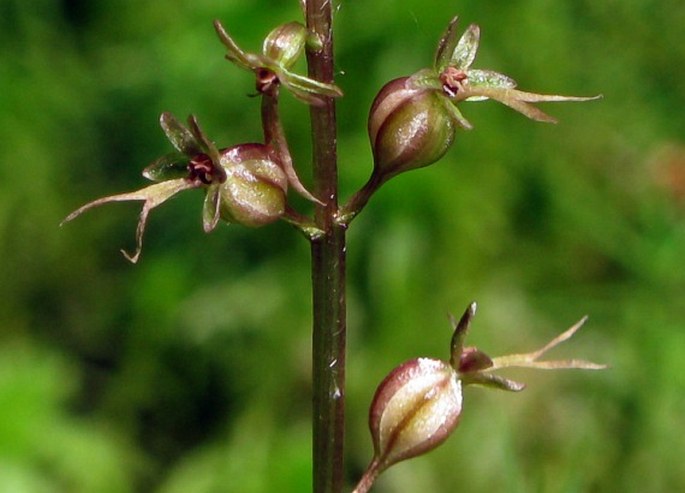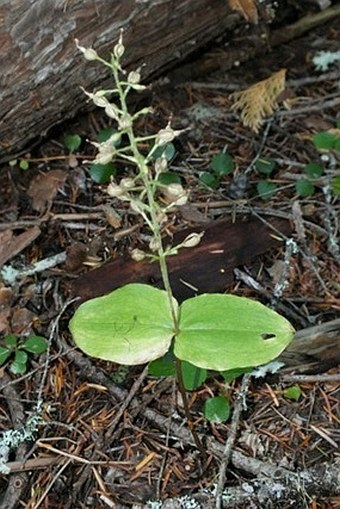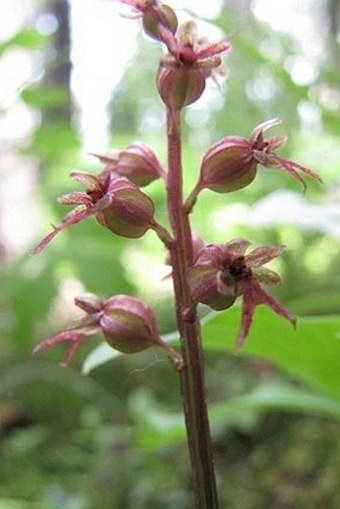Syn.: Ophrys cordata L., Bifolium cordatum (L.) Nieuwl., Epipactis cordata All., Helleborine cordata F. W. Schmidt, Neottia cordata (L.) Rich.
Family: Orchidaceae Juss.

Distribution: Circumpolar species found in northern parts of Europe, in some parts of Asia and in North America. Occurring from Alaska across the continent and southward to California and as far as North Carolina in the east. Absent in the central part from Dakotas southward. In its range 2 varieties are recognized, L. c. var. cordata and L. c. var. nephrophyla.
Ecology: Moist, marshy, mossy woods, shaded wetlands. Blooms in June and July.
Description: Perennial herb, 5–30 cm tall, from fibrous roots. Stems green to reddish purple, glabrous or with glandular hairs in lower part. Leaves opposite, 2, sessile, in middle of stem, heart-shaped to kidney-shaped, 1–7 × 1–2 cm, ending in a short sharp point. Inflorescence is a raceme 1–8 cm long, 5–25-flowered, flowers purplish to yellowish green, pedicels slender, short; sepals and lateral petals 2–3 mm long, ovate to elliptic; lip 4–5 mm long, 2 lobes fork-like. Fruit is a semierect, subglobose capsule, about 5 mm.
Threat and protection: As all orchids, this species is internationally protected by CITES and by individual countries or states. The habitats must be protected as all orchids are micorrhizal and without the proper fungus they cannot thrive. Protection in Europe is provided by Czechia, Slovakia, Poland, Serbia and Ukraine. In North America, Canada protects all native orchids and in US, Massachusetts, New Jersey and Pennsylvania list this species as endangered, New Hampshire, New York and Rhode Island list it as threatened and in Ohio and Maryland it is considered already extirpated.




These images were taken in Canada, Alberta, Bragg Creek (Karel Bergmann: July 2011), and in Czechia, Bohemia, Chebsko, Ztracený les (by Petr Krása: June 2009).


